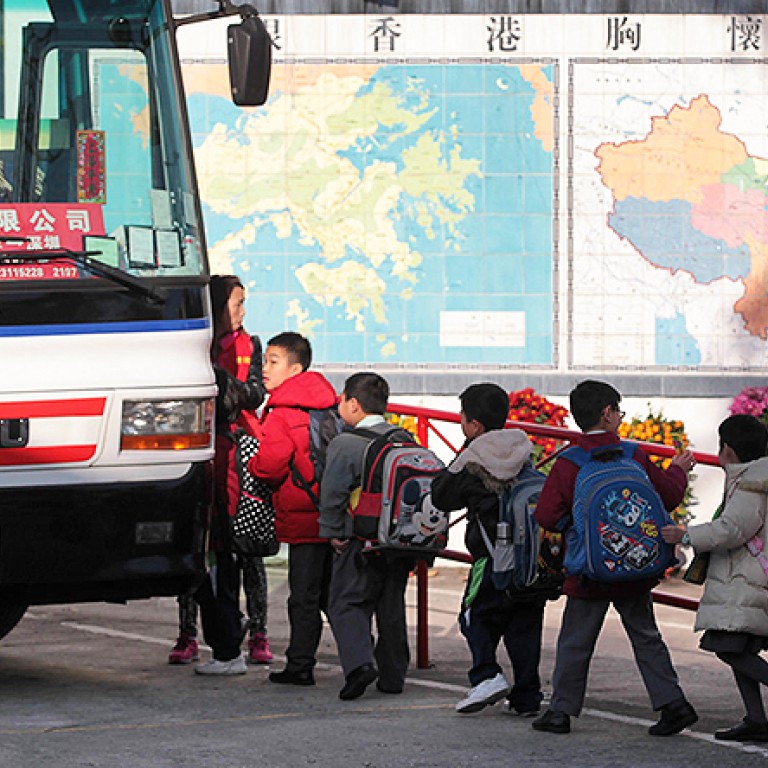
Total of cross-border pupils to quadruple to 80,000 by 2017, say Shenzhen officials
Shenzhen officials estimate figure could reach 80,000 by 2017, as survey reveals 85 per cent are intending to continue their studies in city
Shenzhen authorities expect the number of cross-border schoolchildren to reach as high as 80,000 by 2017, four times the current number, a social service group said yesterday.
This emerged as new research showed that almost 85 per cent of cross-border pupils intended to continue studying in Hong Kong and 70 per cent wanted to work in the city.

"The competition for kindergarten places was so intense last year," Cheung said. "The impact on Hong Kong will be huge."
The figures on children wanting to continue their links with Hong Kong came from a survey of 710 cross-border pupils by the Federation of Youth Groups.
The survey also found that schools in Shenzhen designed for Hong Kong pupils were not really attractive to the young commuters. North District, the area nearest the border, had to turn away 1,400 potential Primary One pupils last year due to a lack of places caused by the influx of cross-border children.
In October last year, hundreds of parents took to the streets in Fanling, North District, demanding the government intervene in the heated competition for kindergarten places and give priority to children living in the district.
Another protest that month in Sheung Shui saw parents urging the government to promise that every child of Hong Kong parents would get into kindergarten and primary school
To ease pressure on the district, the Education Bureau created a separate school net for Hong Kong children living on the mainland. In this year's allocation process, 122 schools in Tuen Mun, Yuen Long, North District, Tai Po, Wong Tai Sin, Ma On Shan and Tung Chung will provide 3,000 Primary One places for these pupils. Almost 80 per cent will be in Tuen Mun and Yuen Long, which means many cross-border children will be allocated to these districts even if they live closer to North District.
In the federation's survey, 68 per cent of the 710 respondents from Primary Four to Form Three said they spent two to five hours commuting every day. But despite the inconvenience, about 47 per cent said they did not want to go to schools in Shenzhen designed for Hong Kong pupils.
Federation deputy executive director Amy Fung Dun-mi said many parents found the fees at those schools too high.
Also, they had doubts about the quality of the education. While the schools used Hong Kong textbooks, they could not hire Hong Kong teachers and were not managed by the Hong Kong government.
Fung said that if the two governments could co-operate to solve the problems, these schools would attract more Hong Kong children living in Shenzhen.
She also suggested the government convert abandoned schools near the border into dormitories or invite hosting families for these children.
The Hong Kong government has not announced any long-term estimate on the number of cross-border children. The Shenzhen government could not be reached for comment.

